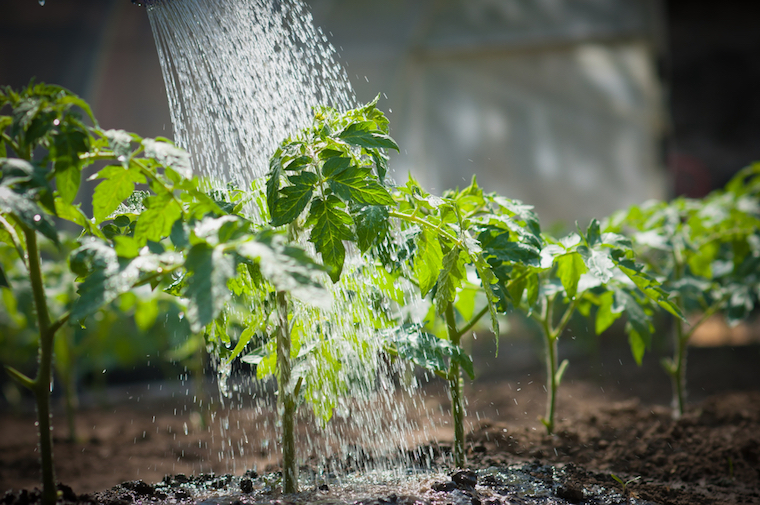Biting into summer’s first sun-ripened tomato is one of the season’s sweetest milestones. While grocery stores and farmers’ markets sell plenty of tempting types, it’s hard to beat the flavor and freshness of a homegrown tomato—especially when you consider the dazzling rainbow of heirloom and hybrid varieties you can grow in your own garden. From huge, juicy beefsteak tomatoes to bite-size cherry types, these summertime staples come in an array of shapes, colors, textures, and flavors that will inspire you to new levels of creativity in the kitchen. No matter which varieties you choose, here Pritish Kumar explains, how to successfully grow tomatoes for a beautiful—and abundant—harvest.
:max_bytes(150000):strip_icc():format(webp)/husky-cherry-tomato-19198666-89f5bcca9a39475a88b6ec3373cee434.jpg)
How to Plant a Tomato
Step One: Stake Out the Right Spot
Whether you want to grow tomato plants in a garden bed or a container, choose a spot that gets at least six to eight hours of direct sunlight per day. Though tomato seeds can be directly sown outdoors, you can gain a head start on the growing season by buying transplants or starting seeds indoors six to eight weeks before your area’s average last frost date. After that date, you can transfer your tomato plants outside. Place small bush tomato varieties 24 inches apart, while positioning larger varieties 36 to 48 inches apart. This is especially important for sprawling indeterminate types—the tomato varieties that keep growing until there’s a frost. Make sure there is 36 inches between rows.
:max_bytes(150000):strip_icc()/top-tomato-growing-tips-1402587-01-a44a63731ea846c29dff2fa6a722fae5.jpg)
Step Two: Dig Deep
To give tomato seedlings the best chance of success, remove each plant’s lowest leaves and set the root ball in a hole deep enough so that only the top cluster of leaves is aboveground. This planting depth is essential for tomato plants, which can form roots along their stems. These extra roots help anchor the plant, especially when starting with tall, leggy transplants, and allow for better uptake of water and nutrients.

Step Three: Add Fertilizer and Water
Some gardeners like to add a little slow-release fertilizer to each planting hole, but if you already have rich soil, this isn’t necessary. After planting your tomatoes, water thoroughly.


Step Four: Support Your Tomato Vine Plant
Stake, trellis, or cage your tomato plants (especially vining varieties) immediately after planting. Skip this step for small bush or patio tomatoes, which can often support themselves. As your plants grow, use cages and stakes to keep leaves and developing tomatoes off the ground, which helps prevent fruit rot and numerous tomato plant diseases.
Select sturdy tomato cages that stand 5 to 6 feet tall. Firmly anchor the cages to the ground with stakes to keep the plants from blowing over and being uprooted during storms. Another option: Pound 8-foot stakes at least 12 inches into the ground and 4 inches from the plant, then attach tomato stems to the stake with garden twine, self-adhesive fabric, or strips of cloth.
How to Successfully Grow Tomatoes
To keep your tomato plants healthy through the growing season, cover the surrounding ground with mulch, water consistently, and fertilize regularly.
Mulching
Placing mulch around your tomato plants helps discourage weeds, maintain soil moisture, and prevent diseases from splashing off the soil onto the leaves when it rains. Aim for a 3- to 4-inch-thick layer of organic mulch, such as straw, chopped leaves, or finely shredded wood chips.

Watering
Tomato plants grow best when they have consistent moisture. If it rains less than an inch per week, supplement by watering. In sprinkler terms, that’s 20 minutes three times a week. You may need to water more frequently in very hot weather if you notice your plants starting to wilt. To prevent diseases, avoid wetting the foliage. Use a watering can or wand to deliver water directly to the root zones, or use a drip irrigation system.

Fertilizing
Tomato plants grow best when fertilized at two specific times during the growing season: First, apply a balanced liquid plant food, such as 5-5-5, according to package directions about one month after planting. Then apply a second dose when your plants start developing fruit.

How to Prune Tomato Plants
Tomato plants don’t have to be pruned. But it’s a good idea to remove any shoots growing between the main stem and a branch, since they sap energy that could be going toward the branches growing fruit.
How to Harvest and Store Tomatoes
Assess Your Crop
How do you know when your crop is ready to harvest? Examine how your fruit looks and feels: Tomatoes are prime for plucking when they’re fully colored and firm. Weather plays a role in the timeline—tomatoes ripen best at temperatures close to 75°F. When the temperature rises to about 90°, the fruits start to soften and develop poor color. If you pick green tomatoes at mature size, they will ripen indoors.
Protect Your Picks from Frost
Before a hard frost, harvest all but the greenest fruits and bring them indoors. Use them in a recipe (fried green tomatoes, anyone?), or allow the green fruits to continue ripening in a closed paper bag. Check the fruits once a week for ripeness, and remove any rotten tomatoes or those not showing signs of ripening. You can also uproot whole plants and hang them a warm, sheltered spot, where the fruits can continue to ripen.
/frost-protection-for-vegetables-bubble-wrap-2539799-hero-6a294ff3f7674bc7bf263dea407cb57b.jpg)
Store Tomatoes Properly
Once picked, ripe tomatoes can be stored on your kitchen counter for up to a week, depending on the temperature of the room. And, yes, you can put tomatoes in the refrigerator—but they won’t taste as incredible as those stored at room temperature.

Reference
https://www.bhg.com/gardening/vegetable/vegetables/how-to-plant-and-grow-tomatoes/













